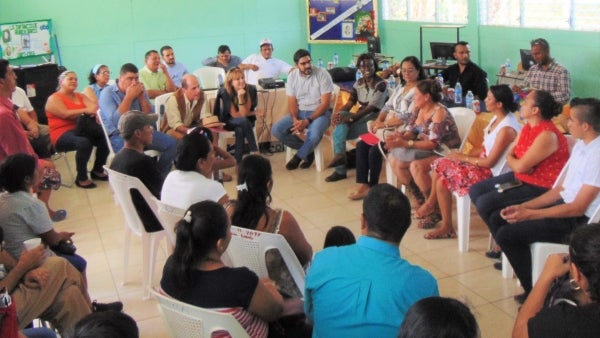
A couple of months ago, during one of my first visits to Central America as the World Bank Country Director, I had the opportunity of hearing the testimony of a young student from the municipality of San Dionisio, in the department of Matagalpa, Nicaragua. She said a small phrase with huge implications: "You know? In school I do not only learn, but here I feel part of a community.”
Today, on International Women's Day, this student's testimony came to my mind as a reminder of the expansive power of social inclusion and education for women, their families and the economy in a region like Central America, where -according to World Bank figures- one out of three women aged 15 to 24 neither studies nor works.
The visit also allowed me to hear about some of the achievements of our projects to support the education sector. Quality training is essential if women are to access jobs that demand skilled labor, with decent wages to help them break the cycle of poverty as well as reduce the likelihood of early pregnancy or becoming a gang member.
This is so because quality education provides greater opportunities for the youngest and can have a positive impact on the region's economy, as skilled human capital enables it to increase productivity.
With Women, there is progress
Investing in the social and economic inclusion of women is crucial. It allows Central America to continue making progress, especially in education and health. World Bank data from 2015, show that, in the last 50 years, life expectancy reached 76 years in Guatemala and Honduras, 77 years in El Salvador and 78 years in Nicaragua, reducing the gap from the Latin America and the Caribbean average of 78 years. Even Panama and Costa Rica have remained above this average, with 81 and 82 years respectively.
The region is also moving ahead with the creation of legal frameworks and institutions that support women and girls, and most countries are signatories of global emblematic agreements such as the United Nations Convention on the Elimination of All Forms of Discrimination against Women and have adopted laws against gender discrimination.
For example, Nicaragua stands out as one of the countries that most guarantee women's participation in the political sphere, following a reform in 2012 though admittedly its implementation remains challenging.
The road ahead
For Central America these achievements also bring about important challenges. Among which, it is worth mentioning teenage pregnancies, child marriages and violence against women. To have an idea of challenges to overcome these aspects, it is enough to review the figures for teenage pregnancies in Central American countries, which except for Costa Rica, are much higher than those of Latin America and the Caribbean.
Similarly, child marriage rates are high, particularly in Nicaragua and Honduras, where 41% and 34% of women marry or live in union before the age of 18, respectively, undermining their rights and also having a significant negative impact on crucial development issues such as access to economic opportunities.
Violence against women is also an aspect to take into consideration as one in three women reports having been exposed to violence, physical, sexual or both, from their partner.
Another pending issue in the region is economic inclusion of women, as labor participation rates of Central American women are often lower than those of their Latin American peers with a similar income level. For example, in 2014, less than half of the women aged 18 to 65 in Guatemala, Honduras and Costa Rica were employed and most of them worked only part-time. Panama, with 40% of women in that age range employed full time, had the highest rate in Latin America and the Caribbean.
Moreover, it is poor, indigenous women, who live in rural areas and have less access to education those that face more serious situations, which makes the work to close the gender gap more urgent.
The strength of rural women
The World Bank has supported Central American countries in different areas, such as access to health and education, violence prevention, access to land, employment generation and social protection. In all cases, it has been evident that investing in women has many benefits.
One example is a communications campaign carried out in the context of the Honduras Land Administration Project, which conveyed specific messages about the economic opportunities that having a land title brings to the population. As a result, 50,000 land titles were issued, of which 58% have a woman as beneficiary.
Another positive story associated to a Bank intervention is from Nicaragua where the Rural Road Improvement Project resulted in an increase in the number of women employed in road maintenance at the community level from 10% to 46%. On top of this, participants in the project held managerial, technical and administrative positions, which enabled them to increase their income, develop skills and make effective decisions.
This experience also had important psychological and human development effects on women, by improving their self-esteem and autonomy, which in turn generated changes in the household and gave them more social exposure.
The benefits of investing in women's economic inclusion must be optimized with public policies that provide them with childcare options and improve access to public services such as running water. These are key for women to be able to engage in economic activities with far-reaching benefits.
Last but not least, we cannot forget the need to overcome stereotypes about the capacity and role of women in different spheres.
The World Bank will continue being a key partner for Central American countries in these areas.


Join the Conversation